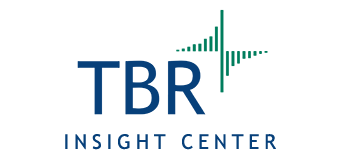Deloitte’s willingness to go into unorthodox markets supports growth
“Broad-based investments including low-cost resources and platform-based solutions are among the recent examples of Deloitte’s efforts to expand its addressable market, resulting in improving non-management consulting revenue performance,” says Senior Analyst Boz Hristov.
“While Deloitte is far from reaching revenue diversification compared to the likes of Accenture, the firm is making inroads in unorthodox markets such as outsourcing services. To succeed, though, Deloitte will need to showcase pricing flexibility as it deploys new ways of engaging with clients.”
In his recent assessment of Deloitte’s management consulting practice, Boz noted that augmenting legacy services through investments in legal services, as well as technology partnerships with the likes of Google and ServiceNow, will play a critical role in building and solidifying trust with new and existing buyers, especially as the majority of them fall within the Extension stage of Deloitte’s digital transformation initiatives. Teaming consulting and analytics experts with solutions architects as a core go-to-market strategy will likely not differentiate Deloitte much from rivals. However, the firm’s dedicated investments in regions such as Germany, where consulting sales revenue share surpassed that of legacy audit services, will help build the globally integrated, diversified portfolio Deloitte needs to protect its No. 1 position among TBR’s benchmarked vendors.
Additional assessments publishing this week from our analyst teams
In 1Q19 VMware experienced another healthy quarter of revenue growth, which increased 12.8% to $2.3 billion. Late 2018 acquisitions helped buoy revenue, as did double-digit cloud management bookings and the reported success of CloudHealth in the quarter. — Cassandra Mooshian, Senior Analyst
In its 1Q19 Hewlett Packard Enterprise Cloud report, TBR discusses the company’s modest 2.8% cloud revenue growth, to an estimated $1.9 billion, and how that underscores Hewlett Packard Enterprise’s (HPE) focus on and commitment to cloud-based hybrid and emerging technologies. HPE GreenLake continues to play a crucial role in HPE’s success, as GreenLake orders grew a reported 39% year-to-year in 1Q19. — Cassandra Mooshian
TBR’s Dell Technologies report deep dives into the performance and strategies of the vendor’s Client Solutions and Infrastructure Solutions groups, while painting the picture of Dell Technologies’ bigger overall strategy. Deeper analysis of some of the announcements that emerged from Dell Technologies World will also be highlighted as well as the ongoing strategic positioning of VMware. — Stephanie Long, Analyst
And sign up now for TBR’s next webinar, Where will hyperconverged infrastructure fit in the modern data center?
